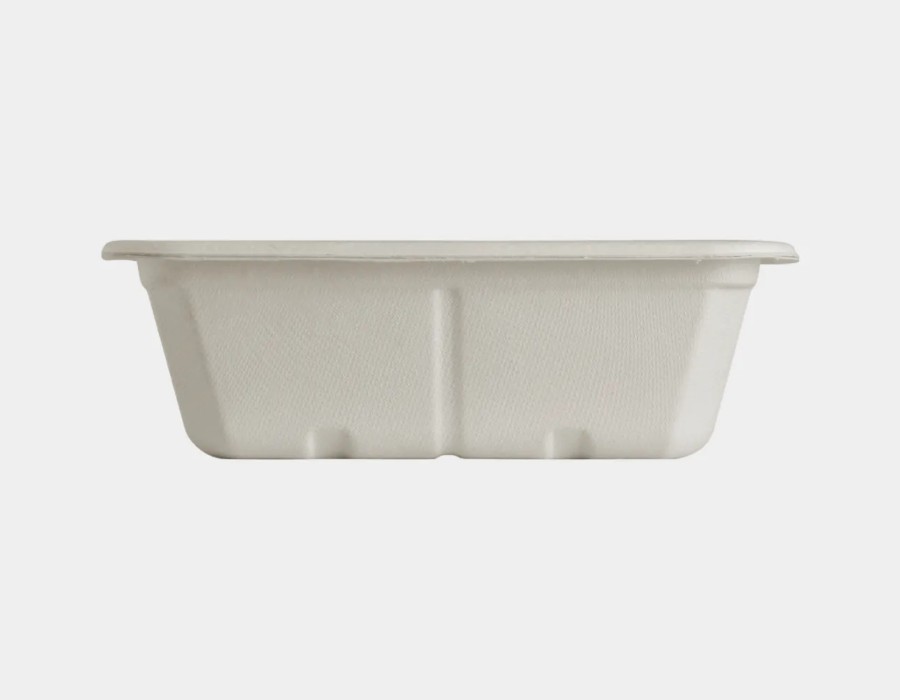As the world faces increasing pressure to adopt eco-friendly practices, industries are searching for innovative ways to reduce waste and environmental impact. One promising development in sustainable packaging is bagasse food packaging—a biodegradable, compostable solution made from the byproduct of sugarcane. This packaging not only provides a greener alternative to traditional plastics but also upcycles agricultural waste into functional, high-quality containers. Let’s explore how bagasse food packaging is transforming sugarcane waste into sustainable solutions that benefit both businesses and the environment.
What is Bagasse?
Bagasse is the fibrous residue left over after sugarcane stalks are crushed to extract juice. For years, this waste product was either discarded or burned, contributing to carbon emissions and environmental pollution. Now, however, bagasse has gained attention as a valuable raw material in the production of biodegradable food packaging. By converting this byproduct into eco-friendly containers, the sugarcane industry is helping to address global waste and pollution issues.
Why Bagasse Food Packaging is a Game Changer
Bagasse food packaging has revolutionized the food service industry by offering a durable, compostable, and environmentally friendly alternative to plastic. Here’s why this material is so impactful:
Biodegradable and Compostable: Unlike plastic, which can take hundreds of years to decompose, bagasse breaks down in just a few months in a composting environment. This rapid biodegradation minimizes landfill waste and prevents pollution.
Non-Toxic and Microwave-Safe: Bagasse does not release harmful chemicals, making it safe for food storage and reheating. It’s microwave- and freezer-safe, making it versatile and convenient for food service businesses.
Upcycling Sugarcane Waste: By transforming bagasse into packaging, manufacturers use resources that would otherwise go to waste, adding economic value and reducing environmental impact.
Key Benefits of Bagasse Food Packaging for the Environment
Bagasse food packaging provides multiple environmental benefits, making it a critical component in sustainable dining solutions. Here’s a look at some of these advantages:
Reducing Plastic Pollution
Plastic packaging is one of the largest contributors to land and ocean pollution, affecting wildlife, marine life, and ecosystems. Bagasse packaging offers an excellent replacement for single-use plastics, reducing the amount of waste that pollutes the environment.
Lower Carbon Footprint
Producing bagasse food containers requires less energy than manufacturing plastic containers, leading to a smaller carbon footprint. Moreover, bagasse packaging production recycles an existing waste product, reducing the need for additional raw materials and further cutting down on greenhouse gas emissions.
Compostable Solution for Waste Management
One of the standout features of bagasse food packaging is its compostability. Once disposed of in a composting facility, bagasse containers break down into natural components, enriching the soil with organic matter. This eco-friendly disposal method diverts waste from landfills and contributes to healthier, nutrient-rich soil.
How Bagasse Food Packaging is Used in the Food Industry
With a rising demand for sustainable food packaging, bagasse containers are becoming increasingly popular in cafes, restaurants, catering services, and grocery stores. Bagasse can be molded into a wide range of packaging options, from takeout boxes and plates to cups and bowls. Businesses are drawn to bagasse because it meets consumer preferences for green products while also meeting industry standards for quality and durability.
Choosing the Right Bagasse Packaging Manufacturer
To ensure that bagasse packaging is truly eco-friendly and high-quality, it’s essential to source products from a reputable manufacturer. When evaluating suppliers, consider factors such as:
Certifications: Look for certifications that validate the compostability and biodegradability of the packaging.
Material Quality: Choose manufacturers that use pure bagasse without added chemicals to ensure safety and sustainability.
Manufacturing Process: Select companies with eco-friendly manufacturing processes that minimize waste and energy usage.
Working with a reliable supplier ensures that the bagasse packaging you choose aligns with your sustainability goals while delivering excellent performance.
The Future of Bagasse in Sustainable Packaging
As awareness of environmental issues grows, the demand for sustainable packaging solutions like bagasse is expected to continue rising. Researchers and manufacturers are also exploring new ways to enhance bagasse packaging, improving its strength, reducing production costs, and expanding its applications. With continued innovation, bagasse packaging has the potential to lead the way in creating a waste-free future for the food industry.
Conclusion
Bagasse food packaging represents a remarkable transformation of sugarcane waste into eco-friendly products that meet the needs of both businesses and environmentally conscious consumers. By choosing bagasse over traditional plastic, businesses can contribute to a cleaner planet, reduce waste, and provide customers with a sustainable dining experience. As more industries embrace sustainable practices, bagasse stands out as a key player in the shift towards greener, more responsible packaging solutions.





Comments